Gut content analysis confirms the feeding plasticity of a generalist fish species in a tropical river
Análise do conteúdo estomacal confirma a plasticidade alimentar de uma espécie de peixe generalista em um rio tropical
Igor David Costa; Ronaldo Angelini
Abstract
Keywords
Resumo
Palavras-chave
Referencias
BAKER, R., BUCKLAND, A. and SHEAVES, M. Fish gut content analysis: robust measures of diet composition.
BARROS, L.C., SANTOS, U., ZANUNCIO, J.C. and DERGAM, J.A.
BARTLEY, T.J., MCCANN, K.S., BIEG, C., CAZELLES, K., GRANADOS, M., GUZZO, M.M., MACDOUGALL, A.S., TUNNEY, T.D. and MCMEANS, B.C. Food web rewiring in a changing world.
BENNEMANN, S.T. and SHIBATTA, O.A.
BENNEMANN, S.T., CAPRA, L.G., GALVES, W. and SHIBATTA, O.A. Dinâmica trófica de
BENNEMANN, S.T., GALVES, W. and CAPRA, L.G. Recursos alimentares utilizados pelos peixes e estrutura trófica de quatro trechos no reservatório Capivara (Rio Paranapanema).
BENNEMANN, S.T., SHIBATTA, O.A. and GARAVELLO, J.C.
BORNATOWSKI, H., NAVIA, A.F., BRAGA, R.R., ABILHOA, V. and CORRÊA, M.F.M. Ecological importance of sharks and rays in a structural food web analysis in southern Brazil.
BRASIL. Ministério do Meio Ambiente – MMA.
CARVALHO, R.A. and TEJERINA-GARRO, F.L. Environmental and spatial processes: what controls the functional structure of fish assemblages in tropical rivers and headwater streams?
CASATTI, L., TERESA, F.B., GONÇALVES-SOUZA, T., BESSA, E., MANZOTTI, A.R., GONÇALVES, C.D.S. and ZENI, J.D.O. From forests to cattail: how does the riparian zone influence stream fish?
CORREA, S.B. and WINEMILLER, K.O. Niche partitioning among frugivorous fishes in response to fluctuating resources in the Amazonian floodplain forest.
DANTAS, D., CALIMAN, A., GUARIENTO, R., ANGELINI, R., CARNEIRO, L., LIMA, S., MARTINEZ, P. and ATTAYDE, J. Climate effects on fish body size-trophic position relationship depend on ecosystem type.
DRENNER, R.W. and HAMBRIGHT, R.K.D. Piscivores, trophic cascades, and lake management.
FERREIRA, A., PAULA, F.R., FERRAZ, S.F.B., GERHARD, P., KASHIWACHI, E.A.L., CYRINO, J.E.P. and MARTINELLI, L.A. Riparian coverage affects diets of characids in Neotropical streams.
FREDERICO, R.G., OLDEN, J.D. and ZUANON, J. Climate change sensitivity of threatened, and largely unprotected, Amazonian fishes.
FROESE, R. and PAULY, D.
GOULDING, M., BARTHEM, R. and FERREIRA, E.
GUBIANI, E.A., GOMES, L.C., AGOSTINHO, A.A. and OKADA, E.K. Persistence of fish populations in the upper Paraná River: effects of water regulation by dams.
HAHN, N.S., ADRIAN, I.F., FUGI, R. and ALMEIDA, V.L.L. Ecologia trófica. In: A.E.A.M. VAZZOLER, A.A. AGOSTINHO and N.S. HAHN, eds.
HAHN, N.S., LOUREIRO, V.E. and DELARIVA, R.L. Atividade alimentar de curvina
HAMADA, N. and FERREIRA-KEPPLER, R.L.
HAMADA, N., NESSIMIAN, J.L. and QUERINO, R.B.
HAMMER, O., HARPER, D.A.T. and RYAN, P.D. PAST: paleontological statistics software package for education and data analysis.
HELLAWELL, J.M. and ABEL, R. A rapid volumetric method for the analysis of the food of fishes.
HYSLOP, E.J. Stomach contents analysis – a review of methods and their application.
INSTITUTO BRASILEIRO DE GEOGRAFIA E ESTATÍSTICA – IBGE.
INSTITUTO CHICO MENDES DE CONSERVAÇÃO DA BIODIVERSIDADE – ICMBIO.
JENNINGS, S. and KAISER, M.J. The effects of fishing on marine ecosystems.
KAWAKAMI, E. and VAZZOLER, G. Método gráfico e estimativa de índice alimentar aplicado no estudo de alimentação de peixes.
KRUSCHE, A.V., BALLESTER, M.V.R., VICTORIA, R.L., BERNARDES, M.C., LEITE, N.K., HANADA, L., VICTORIA, D.C., TOLEDO, A.M., OMETTO, J.P., MOREIRA, M.Z., GOMES, B.M., BOLSON, M.A., GOUVEIA NETO, S., BONELLI, N., DEEGAN, L., NEILL, C., THOMAS, S., AUFDENKAMPE, A.K. and RICHEY, J.E. Efeitos das mudanças do uso da terra na biogeoquímica dos corpos d’água da bacia do rio Ji-Paraná, Rondônia.
LORION, C.M. and KENNEDY, B.P. Relationships between deforestation, riparian forest buffers and benthic macroinvertebrates in neotropical headwater streams.
LOWE-MCCONNELL, R.H.
MANNA, L.R., REZENDE, C.F. and MAZZONI, R. Plasticity in the diet of
MOYLE, P.B.C. and CECH, J.J.
NEVES, M.P., DELARIVA, R.L., GUIMARÃES, A.T.B. and SANCHES, P.V. Carnivory during ontogeny of the
PAULY, D. and CHRISTENSEN, V. Primary production required to sustain global fisheries.
PINTO, B.C.T. and ARAÚJO, F.G. Assessing of biotic integrity of the fish community in a heavily impacted segment of a tropical river in Brazil.
PUSEY, B.J. and ARTHINGTON, A.H. Importance of the riparian zone to the conservation and management of freshwater fish: a review.
R DEVELOPMENT CORE TEAM.
ROCHA, A.A.F., SANTOS, N.C.L., MEDEIROS, T.N. and SEVERI, W. Relações tróficas entre
ROSI-MARSHALL, E.J., VALLIS, K.L., BAXTER, C.V. and DAVIS, J.M. Retesting a prediction of the River Continuum Concept: autochthonous versus allochthonous resources in the diets of invertebrates.
SANTOS, G., FERREIRA, E. and ZUANON, J.
SANTOS, N.C.L., DO NASCIMENTO, M.T., ROCHA, A.A.F., DIAS, R.M. and SEVERI, W. Uso de recursos alimentares por
SCHNEIDER, K.N. and WINEMILLER, K.O. Structural complexity of woody debris patches influences fish and macroinvertebrate species richness in a temperate floodplain-river system.
SEALIFEBASE [online]. 2018 [viewed 1 June 2018]. Available from: http://sealifebase.org
VAN DER LEE, A.S. and KOOPS, M.A. Are small fishes more sensitive to habitat loss? A generic size-based model.
WHITEHOUSE, G.A., BUCKLEY, T.W. and DANIELSON, S.L. Diet compositions and trophic guild structure of the eastern Chukchi Sea demersal fish community.
WOODSON, C.B., SCHRAMSKI, J.R. and JOYE, S.B.A. Unifying theory for top-heavy ecosystem structure in the ocean.
WUNDERLICH, A.C., SILVA, R.J., ZICA, E.O., REBELO, M.F., PARENTE, T.E. and VIDAL-MARTÍNEZ, V.M. The influence of seasonality, fish size and reproductive status on EROD activity in
ZAR, J.H.
ZENI, J.O. and CASATTI, L. The influence of habitat homogenization on the trophic structure of fish fauna in tropical streams.
ZENI, J.O., PÉREZ‐MAYORGA, M.A., ROA‐FUENTES, C.A., BREJÃO, G.L. and CASATTI, L. How deforestation drives stream habitat changes and the functional structure of fish assemblages in different tropical regions.
Submitted date:
16/09/2019
Accepted date:
07/07/2020
Publication date:
31/08/2020

